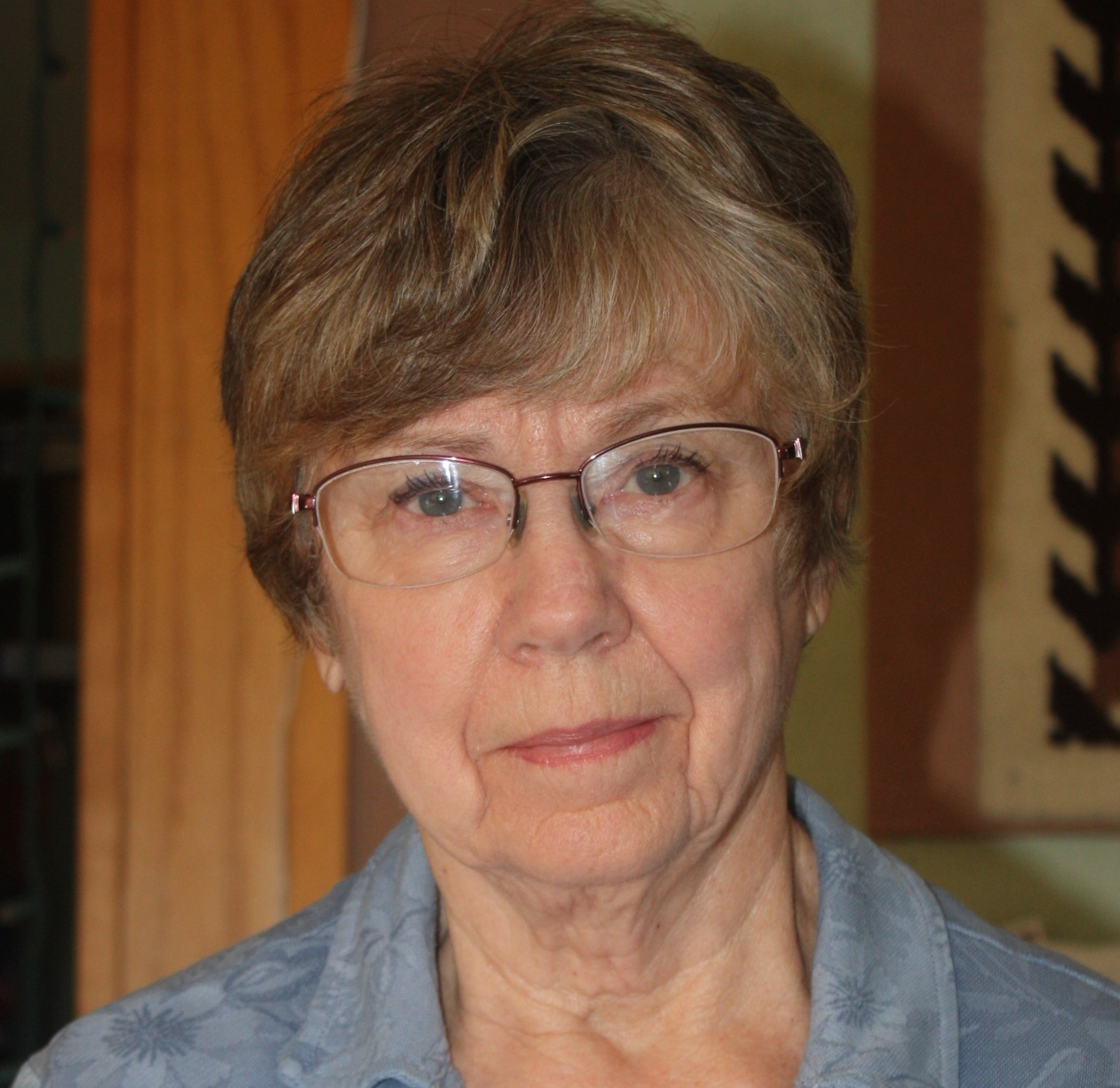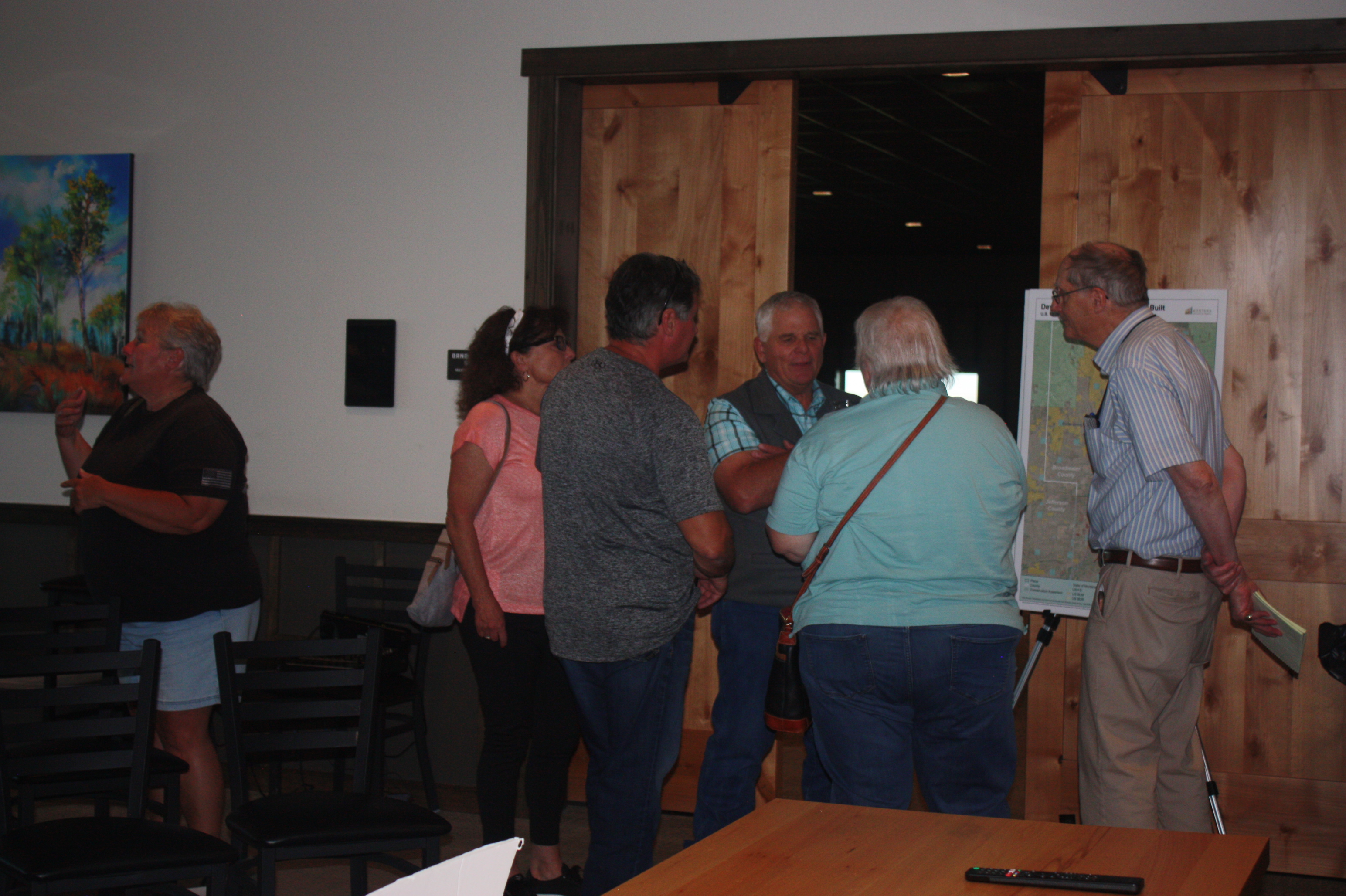Dry Wells Critical Worry In South Broadwater County
 | Author:
Nancy Marks, Reporter
Nancy Marks: MT43 News Secretary and News Editor |
Dry Wells Critical Worry in South Broadwater County
Nancy Marks
Reporter
People in southern Broadwater County showed up at a meeting that was supposed to start a planning process for sound land use in the face of rapid population growth, but they mostly wanted to talk about their wells drying up. Their remarks spotlighted a critical problem for the hundreds of homes in the sprawling subdivisions in the county’s Wheatland area near Three Forks.
The Aug. 24 evening program was held in an upstairs room of the Bridger Brewery building under the authority of the Broadwater County Board of Commissioners. It was billed as “Planning for Growth” and was presented by James Caniglia of WGM Group, a consulting company.
Caniglia spoke about identifying important agricultural land and wildlife habitat and how living in new subdivisions could work best for people. But those who responded wanted to talk about water, what to do about wells drying up, or their feelings that county commissioners have not protected their property rights by allowing developers to create more subdivisions. One man said the presentation meant nothing to him and was just a bunch of BS. He and the woman with him soon departed.
Other people kept steering the talk toward dry wells and whether ever more future subdivisions would ruin the area for homeowners already there. Barbara Mutter, the organizer of the Three Forks area ambulance service, visibly frustrated, commented that the community needed facts about water, not long-term visions.
About 50 people came to the meeting but many did not stay for the entire presentation. All three county commissioners attended. Members of the public who spoke were not required to give their names.
The next session was scheduled for Aug. 31 in the county’s Flynn Bldg., 416 Broadway St., Townsend, to talk about land planning for growth in northern Broadwater County. The two meetings were the first of three rounds of separate public meetings for the “North Sub-Area” north of Townsend and “South Sub-Area” south of Townsend. The presentations are all made by WGM Group. The company bills itself as a “comprehensive engineering, planning and design firm, creating sustainable communities since 1966.”
The study and meetings are funded by the state Department of Commerce’s Community Technical Assistance Program.
WGM Group is the firm that designed developer Steve Cavanaugh’s controversial Rolling Glen Ranch master plan subdivision in the Wheatland area.
In response to concerns about groundwater shortage, Caniglia said the state Department of Natural Resources and Conservation (DNRC) has an extensive study of deep-water tables that would help people plan how to develop the area. “Of the 150 wells DNRC has tested, only two currently contain nitrates, but with further degradation through additional housing that will undoubtedly become a problem,” he said. He added that community wells drilled deep into the underground aquifer and shared sewer systems used in higher-density subdivisions could solve problems with lack of water.
One person in the audience spoke about rural cooperative wells used in northeast Montana. He said entire ranching communities come together to dig deep wells to pipe water to each of their properties. Caniglia said another approach to the lack of water would be for homeowners to install cisterns and haul water, a strategy used in several parts of the state where groundwater is limited.
Montana Department of Commerce representative Gus Byrom addressed the need for professional engineering to zero in on a strategy for funding area water projects. Public sources of funds for developing water include government grants and low-interest loans. His team works to gather those grants to help small communities. “If you form an area district, you are entitled to apply for these monies. They are not available to private landowners,” he said.
Caniglia emphasized the urgency to establish a vision since the unplanned placement of subdivisions has already begun to use up valuable agricultural land. “This is the reason your county commissioners have come to us, to help build a growth plan for your county,” he said.
Caniglia noted that in the southern part of the county, there are federal Bureau of Land Management properties, state school trust lands and a few private conservation easements. Tying those areas together with additional conservation easements would be one way to conserve agricultural land, its way of life, and wildlife habitat. “This would preserve the birds, the unique plants and the scenery that you enjoy today in this area,” he said.
Caitlin Frisbie, the WGM project assistant, moved the presentation into an audience survey session. She asked everyone to study the various topographical maps stationed around the room, and then make notes as to where they would like to see agricultural and wildlife land continue, where low-density and high-density subdivisions should be located and what existing roads could be extended. Frisbie asked everyone to go to the WGM website when they went home to take the online survey as well.
In an interview, Caniglia said he thought the meeting took a step in the right direction, but he was not prepared for the group’s sharp concern about water. “I would have changed my presentation by concentrating on their issue had I realized how focused they were on it,” he said.
Caniglia reported that 40 people, including 33 from south Broadwater County, had responded to the survey, which is on the Broadwater County commissioners’ website. The survey addresses concerns about community planning in Broadwater County. “I really hope people in the community will take the survey, so we have an idea what growth people want in their county,” he said.
Caniglia previously worked for 15 years as an urban planner with the cities of Laurel and Red Lodge.
Article Images
Click on Image Thumbnail(s) to view fullsize image
PhotoCredit: Photo Credits: Nancy Marks
Image 1 Caption: Broadwater County Commissioner Darrel Folkvord fields questions from participants during the survey section of South Broadwater County planning meeting.
Photo Credits: Nancy Marks
Image 2 Caption: Radersburg resident Leslie Heisey and Townsend businessman JB Howick study Broadwater County maps before they suggest county planning ideas.
Photo Credits: Nancy Marks

.JPG)